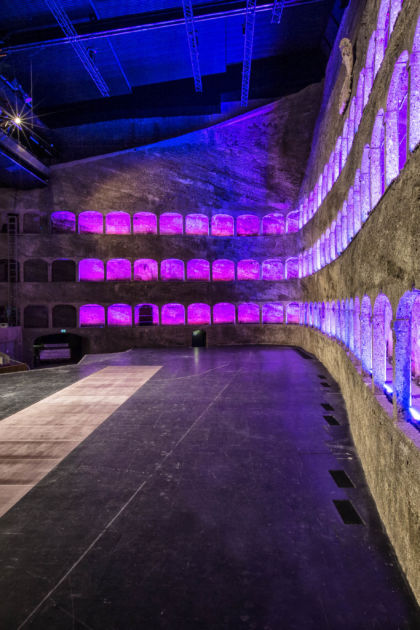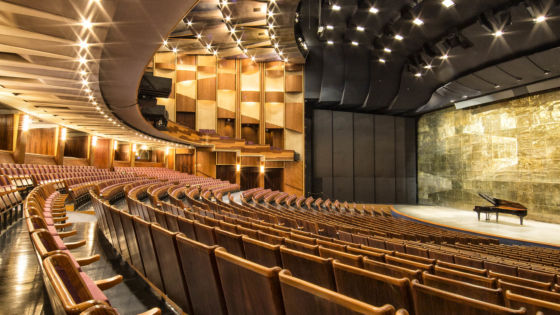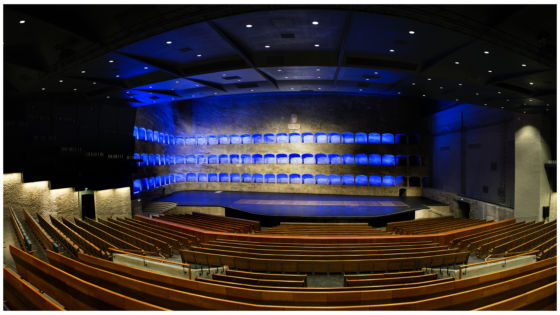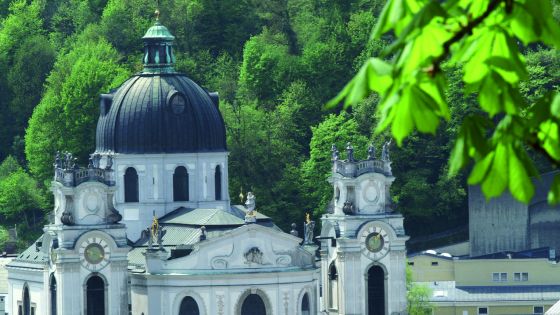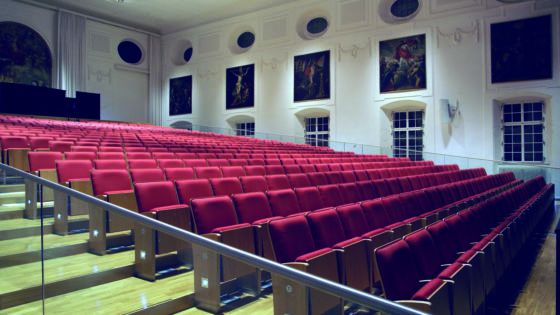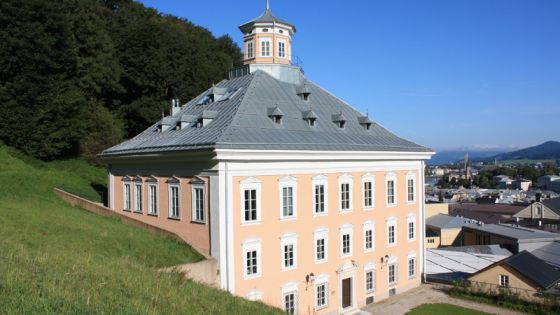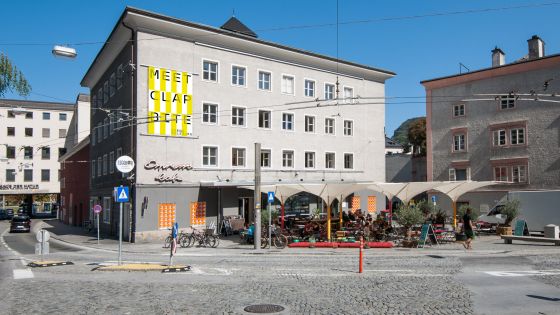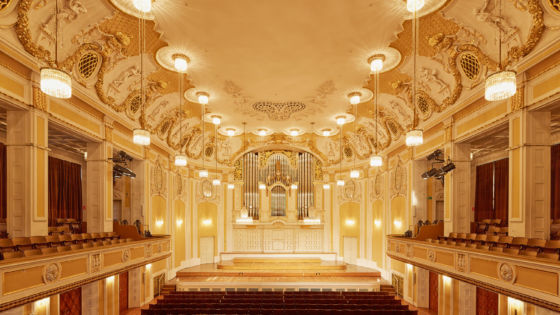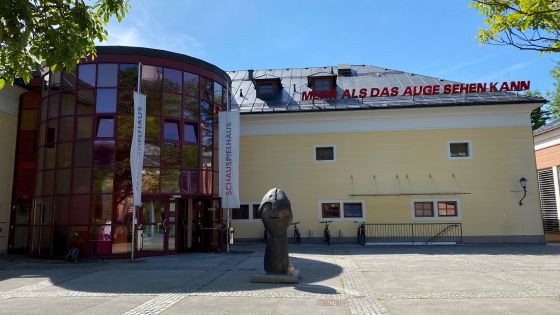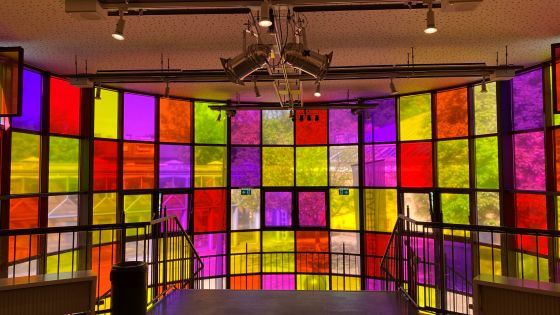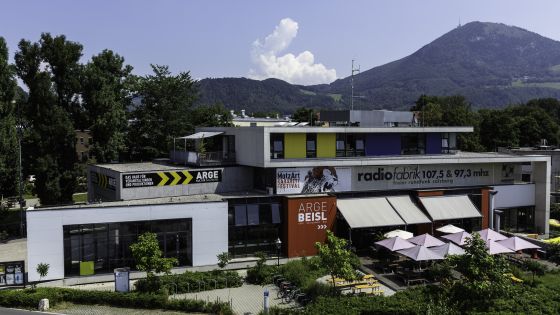It was Max Reinhardt who suggested that the Winter Riding School should be converted, and it was also his idea to transform the Summer Riding School (Felsenreitschule) into a theatre. During the first half of the 17th century conglomerate rock was quarried here for the building of the cathedral. In 1693, during the reign of Prince-Archbishop Johann Ernst Thun, according to plans by the Baroque master architect Johann Bernhard Fischer von Erlach, three tiers of 96 arcades were hewn into the walls of the disused quarry so that from here people could watch equestrian displays and animal baiting events.
In 1926, when Max Reinhardt first attempted to use the Felsenreitschule to stage Goldoni’s Servant of Two Masters for the Salzburg Festival, the ambience was ideal for the “realistic” character comedy in the style of popular theatre: the action took place on a so-called Pawlatschenbühne, a small raised platform, the ground consisted of compressed earth and the audience sat on wooden benches. In 1933 Clemens Holzmeister built a remarkable set for the production of Faust in the Felsenreitschule, the Faust Town which is still regarded as one of the most impressive transformations of this venue. The first opera production in the Felsenreitschule took place in 1948 when Herbert von Karajan conducted Gluck’s Orfeo ed Euridice.
From the end of the 1960s radical conversion and adaptation work took place, mainly according to plans by the “festival architect” Clemens Holzmeister. An understage area, an orchestral pit and a lighting bridge were installed, a weatherproof roll-back roof to offer protection against rain and cool summer evenings, and finally an auditorium with boxes and circles as well as a depot for scenery were created.
Jean-Pierre Ponnelle’s staging of Mozart’s Die Zauberflöte, which was presented here every summer from 1978 to 1986, achieved legendary status. The same is true of Shakespeare’s plays Julius Caesar, Coriolanus and Anthony and Cleopatra in the productions by Peter Stein and Deborah Warner (Coriolanus), which in the early 1990s were internationally acclaimed.
When the Haus für Mozart was built, the Felsenreitschule already received a new audience grandstand, which resulted in improved sightlines and acoustics for the audience.
Improvements are:
– A new roof construction with two fixed girders at the edges and three elements supported by five telescope cantilevers: the slightly inclined pitch roof consisting of three mobile segments resting on five telescope arms will be retractable and expandable within six minutes. Hanging points on the telescope cantilevers for stage technology (chain hoists), improved acoustical and heat protection and two lighting bridges will optimize the stage action.
– New security technology including electrical installations, stage lighting, effect lighting and effect sound.
– In addition, the interior expansion of the 3rd floor will be completed at that time, and the building shell of the newly constructed 4th floor under the roof of the Felsenreitschule will be made available to the Festival – this being the last instance in which new space can be created within the Festival District.
On June 9, 2011, a gala concert marked the reopening of the Felsenreitschule.
Induction loop available



